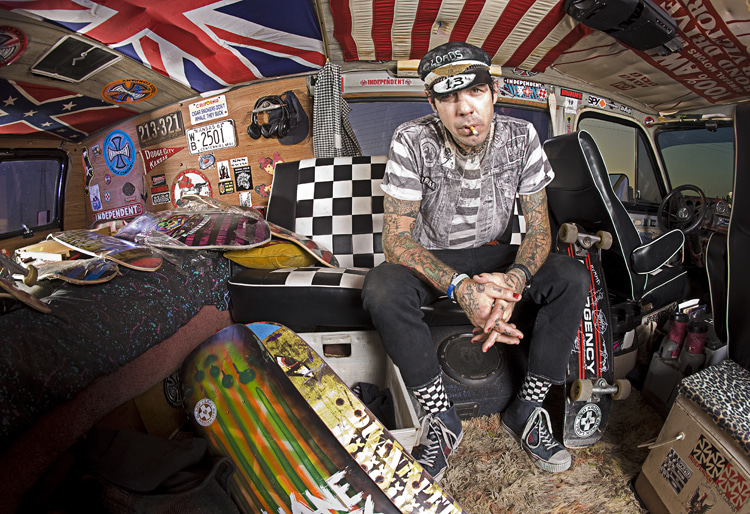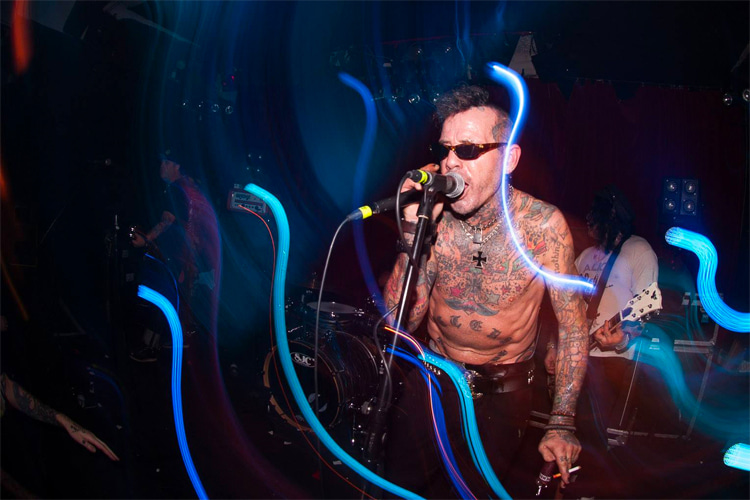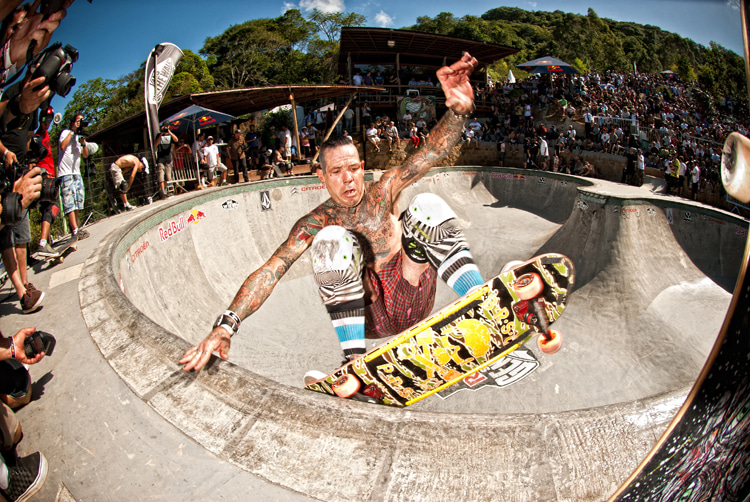News
Duane Peters: the punk rock skater who defied gravity
Duane Peters was one of the most influential vert skaters of his generation. Here’s the rollercoaster life and career of “The Master of Disaster.”
Duane Peters was born in Anaheim, California, on June 12, 1961.
When his parents divorced, the nine-year-old went to live with his used-car salesman father. The youngster didn’t like school, and he often skipped it.
As a result, his father sent Duane to live with relatives on a farm in Michigan for a year.
Shortly after returning to his father’s home, the teenager dropped school at 14.
Curious about the developing underground skateboarding scene, Peters cut a piece of wood and attached roller-skate wheels to it.
Equipped with his homemade board, he was ready to become an icon.
“I got into skateboarding because it wasn’t a sport,” the outcast once said.
Refusing to grow up, Duane spent his days surf-skating the Newport Beach sidewalks, trying his first tricks, and eventually riding empty swimming pools “until the police helicopters chased us out.”
Peters got into punk rock in 1977 through skateboarding and after listening to The Ramones.
Soon, he changed his looks and went from long, blond hair to a punk-style mohawk.
When still a teenager, alongside Steve Olson, he helped introduce the revolutionary musical genre and fashion to the sport.
Peters developed several signature moves and invented several tricks, including the acid drop, indy air, disaster, layback rollout, fakie footplant, sweeper, backside layback grind revert, and the invert revert.
Duane Peters: he started skating in the 1970s in Newport Beach, California | Photo: SHoF
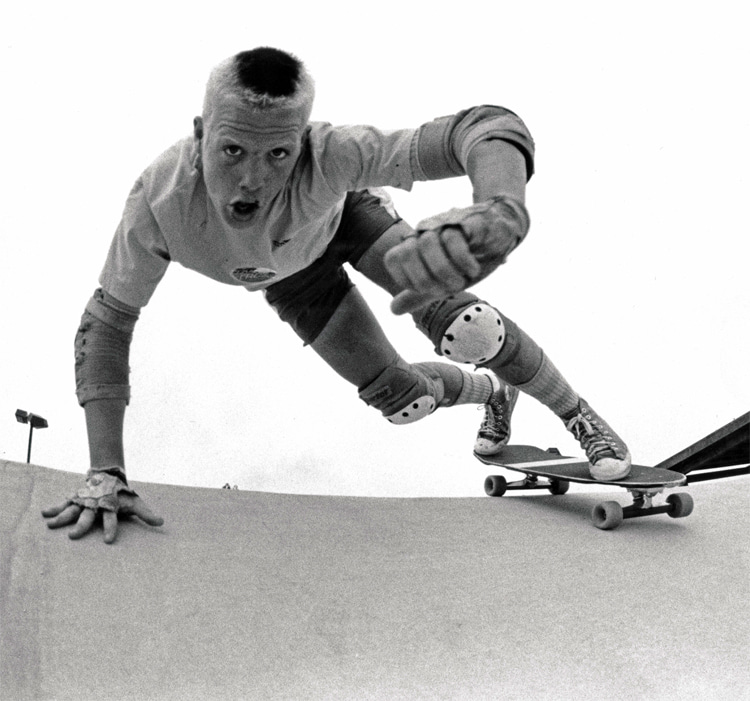
The Loop of Death
But his most impressive stunt arrived when the Sid Vicious of skateboarding became one of the first skaters to defy gravity.
In 1978, the California rider and Skitch Hitchcock completed an upside-down, full revolution on a specially looped steel and plexiglass track built for the “Skateboard Mania” show.
“The Loop of Death,” also called “The Loop of Life,” was installed at Cuckoo’s Nest, a punk club in Costa Mesa.
The event shaped his career forever, although he was an all-around skater, competent in ramps and on the streets.
“They asked me what I wanted, and I told them Hot Wheels track because Evel Knievel was my idol. I told them I wanted it 14-foot tall like the Mount Baldy Pipeline,” recalled Peters.
“My entry was 17-foot high, I had two ski poles at the top, and I still didn’t know that was fast enough. By the time I made it, I was starting from halfway up – you don’t need that much speed.”
“I needed the money because when my generation ran out of money, no one was paying our rent. Vertical skateboarders used to be broke guys.”
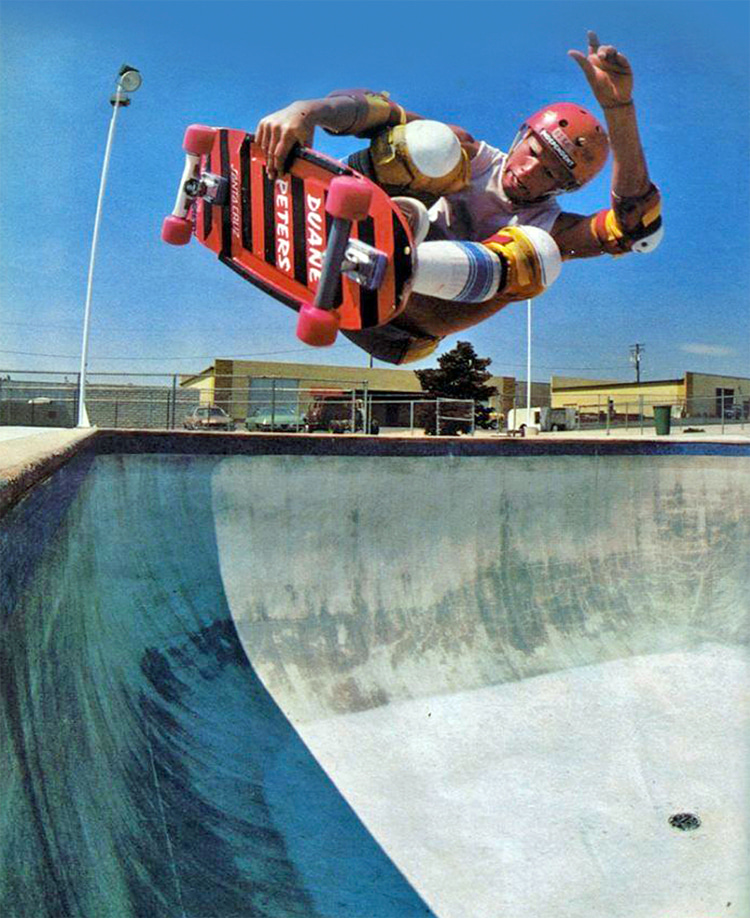
A Punk Rock Life
One year later, the skatepunk turned pro for Santa Cruz Skateboards.
Throughout his young adult life, the skater’s erratic behavior led to drugs, violence, and eventually jail and homelessness.
In 1986, Tony Hawk’s father, Frank, threw the problematic skater in jail in Carson, California. “That got me off methadone,” Peters noted.
The skatepunk criticized the most successful professional skater of all time often time. He accused Tony Hawk of selling out and turning skateboarding into a mainstream sport.
Peters attacked Hawk for “doing some s*** that didn’t make any sense,” referring to the obsession with tricks rather than elegance, fluidity, and speed.
Later, Duane apologized to Tony for verbally attacking his father when he died.
“In my 20s, I was in jail about every three months because that was the only way I knew to clean up.”
Peters was “paid in bottles” and lived in garages for a long time.
His attitude and showmanship somehow inspired Thrasher’s “skate and destroy” motto and spirit.
The magazine actually featured him on the cover with the title “Duane Peters: The Damned.”
He even competed with a swastika painted on his hair and hood. Controversial? Always.
Duane Peters: a skater at heart with punk blood | Photo: Faby/US Bombs
Music Fuelled Skateboarding Fuelled Music
Music was always a serious passion and occupation.
Duane played since he was 17 and channeled any pocket money he won from contests to buying musical equipment for his band.
“I didn’t want any money – I just wanted to be seen,” the skater-musician said later.
He believes “punk saved skateboarding.”
“Skaters like Steve Olson, Steve Alba, and Duane Peters helped lead skateboarding away from surfing to the world of punk and indie music, replacing Led Zeppelin, sunlight and waves with The Clash, brash colors, and geometric patterns,” notes Iain Borden, author of “Skateboarding and the City.”
In 1993, while hanging with the San Francisco skate crew The Jaks, Duane formed the California punk rock band U.S. Bombs alongside Kerry Martinez.
Throughout his musical career, he founded and joined other groups, including Die Hunns, Political Crap, Exploding Fuckdolls, and Duane Peters Gunfight.
Peters started two record labels – Disaster Records and Indian Recordings.
The Master of Disaster quit heroin in his mid-30s after a 15-year-drug habit and six or seven periods behind bars.
Nevertheless, Peters substituted alcohol for drugs and only quit drinking when he started to develop liver problems.
According to Peters, what really matters in skating is “style and aggression.” His favorite skater of all time? Chris Senn.
Duane Peters: the skater founded American punk rock band U.S. Bombs in 1993 | Photo: Caughron/Red Bull Illume
Broken Bones
Duane Peters prolonged his professional skateboarding career into his 40s, with regular appearances at skate demos and legends gatherings.
The influential underground idol broke his collar bone 16 times, his elbows and arms, a leg, and all his fingers and toes.
Some of these injuries resulted from skateboarding; others resulted from physical interaction with police officers, as well as motorcycle and car wrecks while driving under the influence of drugs and alcohol.
Peters had three children – Schuyler (1985) and Chelsea (1987) from his relationship with Eva, and Clash Thomas (2004) from his marriage with bass player Corey Parks.
In 2007, Duane lost his 20-year-old son Chelsea “Chess” Peters to a car accident. “Chess” was an accomplished rider like his father.
Duane Peters is 5’8” (1.73 meters). He lost the two front teeth after a fistfight and an uncaught flying microphone.
The punk rock skateboard legend has the letters S-T-A-Y tattooed on the fingers of his right hand, and A-W-A-Y inked on his left-hand digits.
He was inducted into the Skateboarding Hall of Fame (SHoF) in 2015.
Share this article
